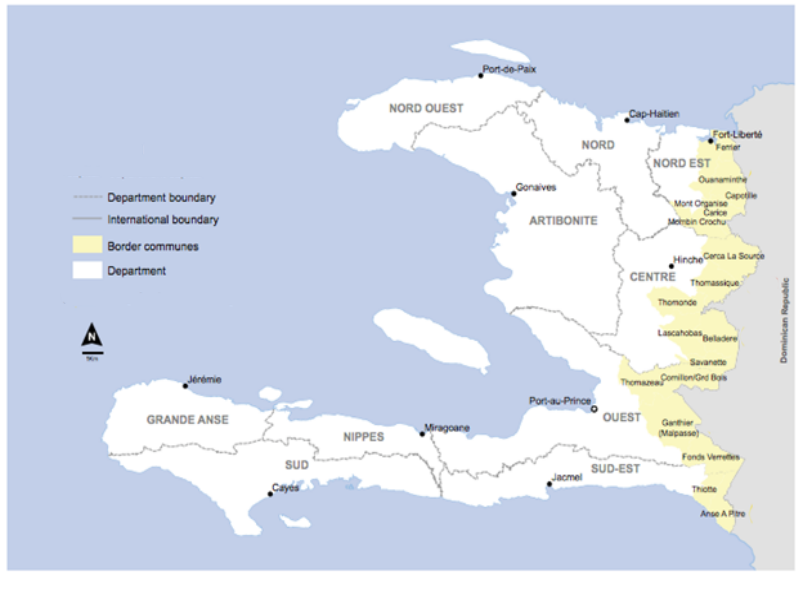A big part of the irony of the rocket like growth of the Dominican mango export industry over the past 30 years (read this post) is that this had not only happened while Haiti’s exporters had failed to increase their own exports or to effectively organize the mango industry: it was arguably launched with the assistance of Haitian mangoes.
HAITIAN MANGOES EXPORTED TO THE DOMINICAN REPUBLIC

According to Haitian Agronomist and Economist Alex Bellande who in 2006 conducted a study of cross-border mango trade with the Dominican-Haiti institute LAREHDO, the importation of Haitian mangoes to the Dominican Republic began in earnest only in 1992. But by 2005, only 13 years later, 7,000 to 8,000 metric tons of mangoes were going from the 15 Haitian border communes straight into the Dominican Republic. To put that in perspective, that’s equivalent to 1.8 million boxes of mangoes, or as much or more mangoes than were being exported to the US in most years. The total retail value on the Dominican market was US $5 to $7 million, 2/3rds of which went to Dominican intermediaries and retailers.
This was precisely the period when the Dominican mango export economy really took off. In the words of Bellande and Duret, “The Haitian mango contributed to the competitiveness of the Dominican mango on the international market” (Labady, 2008: 13). And it did so in two ways:
- By helping meet domestic demand and the flourishing expat and tourist sector (pop 200,000) thereby freeing mangoes up for export and encouraging the sector. (Indeed, in 2006 more than 20% of all mangoes being consumed in the Dominican Republic were coming from Haiti.)
- It helped supplement exports as at least some of the Haitian mangoes were getting re-exported in chutney, jellies and jams made from the Francique.
Today, 10 years after the LAREHDO study, the flow of mangoes out of Haiti and to the Dominican Republic has almost certainly increased. Indeed, if 1.8 million boxes were going to the Dominican Republic in 2006, there may today be more going to the Dominican Republic than being exported through Haitian packing houses, a point supported by the fact that the 15 communes on the Haitian border, the hills of which are heavily dotted with mango trees—do not send mangoes to the packing houses and are ignored in Haiti Hope and other mango projects (AltePresse 2006).*
*For readers who think that recent import and exports conflicts between the DR and Haiti would have stymied the flow of mangoes note that talk of border closings and import restrictions are urban and political rhetoric that have little to nothing to do with reality of the border. The point is especially poignant regarding Haitian restrictions on the entire 366 kilometers of border there are only 5 border posts where one finds any Haitian guards. Yes, five.
WORKS CITED
AltePresse 2006 Haïti parmi les dix pays meilleurs producteurs mondiaux de la mangue La filière des mangues haïtiennes profite à la République Dominicaine lundi 22 mai 2006 http://www.alterpresse.org/spip.php?article4676#.VlNfbHarQgs
Bellande, A., Damais, G. & P. Duret. (2008). Les Mangues : un créneau porteur et prometteur. In R. Mathelier (Ed.), Filières agricoles et dynamique transfrontalière (pp. 57-75). Éditions Zémès.
Labady, Ronald M. 2008. etude des filières non agricoles haitiennes Projet « Appui au renforcement de la capacité des caisses du réseau de l’ANACAPH dans la réduction de la pauvreté en Haïti » Réf : 9 ACP HA 12/8







